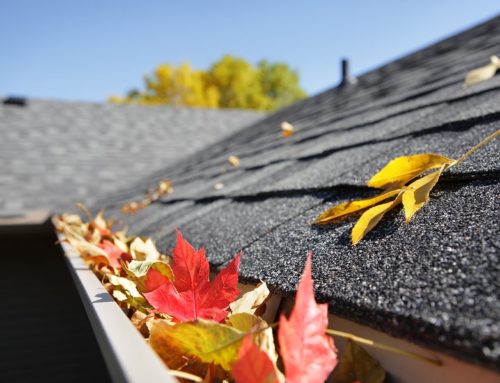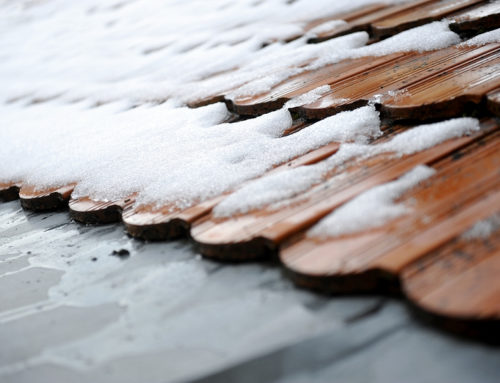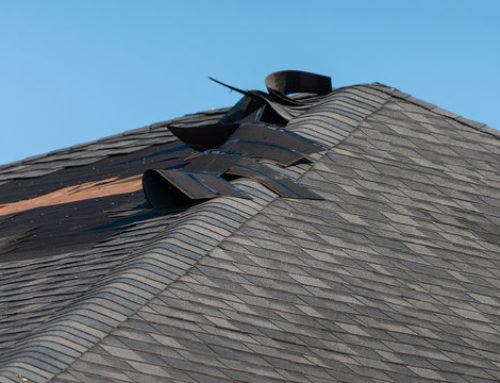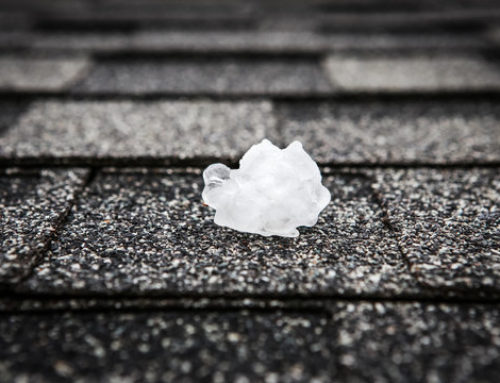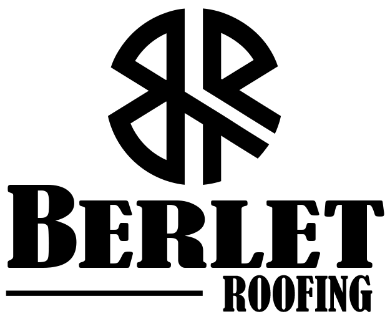The roof over your head; it’s your home’s first line of defense and protection – against sunlight, rain, snow and wind – but it’s typically the last thing most homeowners think about. Homeowners might purchase just one new roof in their lifetime and making poor decisions on such an important protective barrier can be catastrophic. With that in mind, here are some of the most common myths about roofing that every homeowner should understand.
Myth #1 – There is nothing wrong with putting new shingles on top of existing ones.
Don’t do it, even though many building codes say it’s acceptable. Think of shingles as the skin of an apple. Ever bite into that bright red skin only to get a mouthful of a soft, bruised, mushy interior? Underneath shingles is a layer of wood sheathing, usually plywood. Sheathing can rot because of leaks, inadequate attic ventilation or just age. The best way to inspect this critical layer is to strip away the old shingles. This is perhaps the biggest myth we’ve heard. Yes, it’s legal to install up to two layers of shingles on your home but you don’t want to. When you install new shingles over old ones there are many different issues that can happen. First, if your old shingles aren’t flat, your new ones won’t be either. Second, any algae on your old roof is now underneath your new roof which will impact your new roof’s life. Lastly, if you had a roof leak, covering it up doesn’t fix the leak and only by doing a total tear off of the old shingles can your roof deck be examined. It’s cheaper to do an overlay but it’s not fine. Fact: always ask for a tear off of the old shingles in your roofing quote.
Myth #2 – All asphalt shingles are basically the same.
Today’s laminated and fiberglass-reinforced products are better than ever. Shingles are rated for durability; some are warranted to last 50 years and guarantee wind resistance (up to 110 mph). Manufacturers offer limited lifetime warranties. Some shingles are made to combat specific problems. For example, in humid areas, some roofs, over time, show a black mold. Algae-resistant shingles contain embedded granules of zinc and copper, which, when mixed with roof water, are natural algaecides. Other shingles are manufactured to look like wood shakes or slate tiles.
Myth #3: Flashing needs to be replaced only when a new roof is being installed.
Flashing, the metal material fabricated to divert water away from vents, pipes and other roof openings, including chimneys, is its own, separate animal. It can lay in place for years and can protect even longer than other components of the roof. Or it can fail in months and otherwise ruin a perfectly sound roofing installation. As a rule, flashing should be checked every six months. A visual inspection can be made with binoculars. Look for dried caulking or sealant, cracked or broken flashing pieces and damaged shingles in contact with the flashing. If a visual inspection turns up potential problems, have a roofing contractor climb the ladder for a better look or to make repairs.
Myth #4 – Attic insulation saves energy and helps roof performance.
Adding more than the required insulation can block ventilation openings at the soffits and eaves and might trap moisture. Trapped moisture can warp and rot sheathing from the attic interior and also can be a source for mold. Actually, there is a special relationship between insulation and ventilation. Insulation is rated by thermal resistance, called R-value, which indicates the resistance to heat flow. The higher the R-value, the greater the insulating effectiveness. Determining existing R-value is based on the type of insulation material and its thickness. Increasing the R-value with another layer of fiberglass would seem to be logical. However, adding insulation can vary the temperature at the wall, possibly creating condensation inside the attic. Proper ventilation eliminates moisture buildup and maintains steady attic temperatures, in both cold and warm seasons. Ventilation devices, including fans, vents, louvers and ridge venting, are rated in square inches for net free area (NFA). Signs of inadequate ventilation are ice-damming, mold on the underside of the sheathing and excessive frost accumulation on the roof deck or in the attic.
Myth #5 – Gutters are separate from the roofing system.
Roofs are designed to divert water from the structure. The gutters are the final piece of the process; they prevent water from dripping down exterior walls and move it from the foundation. It’s why many roofing installations can include new gutters and downspouts.
At the very least, clean gutters of debris, sediment and leaves regularly. Repairing damaged runs might be as easy as tapping in a few gutter spikes with a hammer or reattaching downspouts with a riveting tool. Clogged and sagging gutters can cause leaks behind exterior walls and contribute to ice-damming. Over an extended period, a faulty gutter system can rot away fascia boards, soffits and the sheathing at the roof’s edge.
Myth #6 – A new roof does not need an inspection.
This is a myth. Just like any part of your home, anything can go wrong at any time. No matter how old your roof is, you should schedule regular roofing inspections. Just because you don’t have a roof leak, doesn’t mean there isn’t an issue. Just like regular maintenance on your car helps it last longer, the same is true for your roofing system.
Myth #7 – All roofing companies are the same.
Just like snowflakes, no two roofers are the same. When you’re interviewing local roofing companies, ask about manufacturer certifications, training, workmanship warranties or installation guarantees, licensing, and insurance. You want a roofer who has been serving the community with a good reputation who backs the work they do.
Ready for a new roof? Need an inspection? Berlet Roofing has you covered. Call us today for your no-obligation inspection and estimate. 970-846-9816

